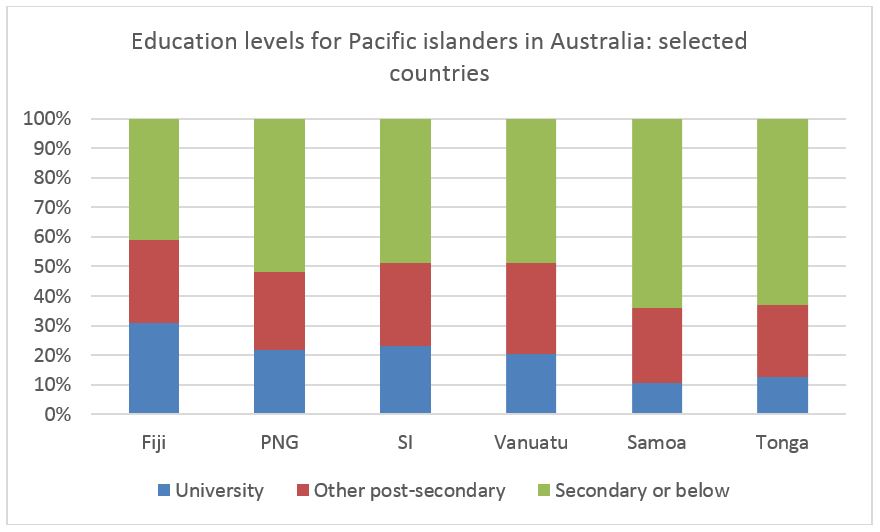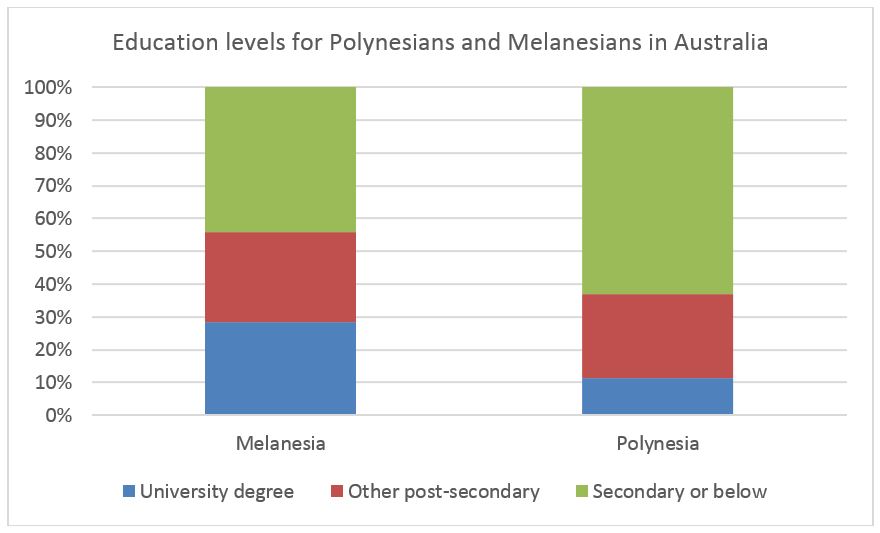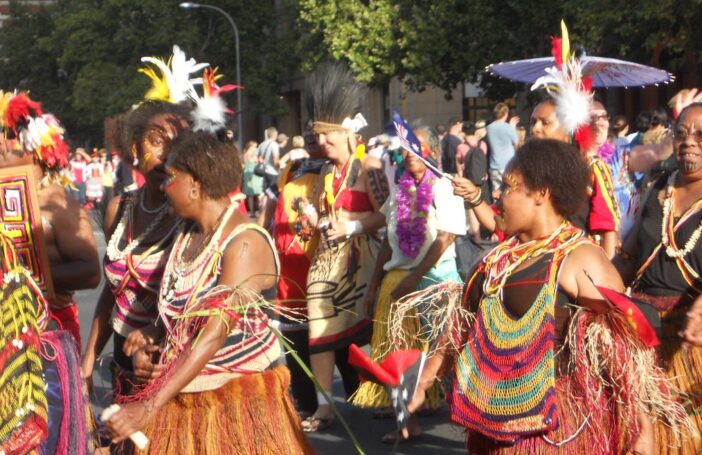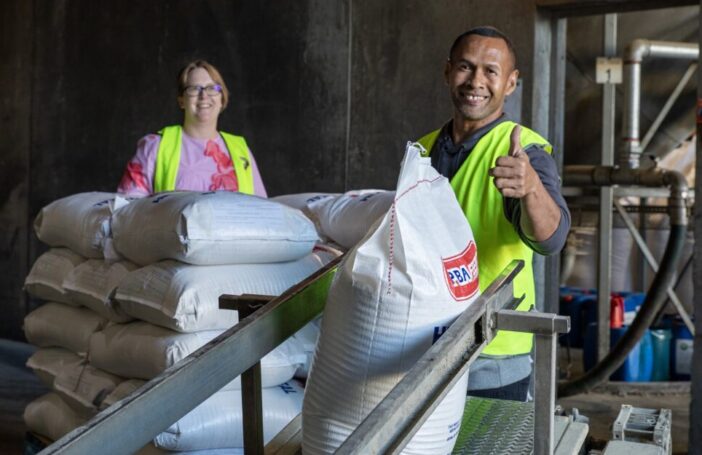In the first blog post in this series based on the 2011 Australian Census, Jonathan showed that the number of Polynesians in Australia was growing faster than the number of Melanesians, even though Melanesia is much bigger than Polynesia, and has closer ties to Australia. Another difference between Melanesia and Polynesia is that the latter group of countries have much higher education levels. And, yet, Melanesians in Australia are better educated.
Of the 108,000 Pacific Islanders in Australia aged between 15 and 65 (and remember that we are defining people in terms of ancestry), 44 per cent identify as having some form of post-secondary school education. But look at the difference between Melanesians and Polynesians in the figure below. More than half of the working-age Melanesians in Australia have some form of post-secondary education, but only just over one-third of Polynesians do. Almost 30 per cent of the working-age Melanesians in Australia have a university degree. By contrast, just over 10 per cent of working-age Polynesians in Australia have a university degree.
Source: 2011 Australian Census
It is also interesting to look at individual countries, as the graph below does. 20 per cent of working-age Papua New Guineans in Australia have tertiary degrees, but only 11 per cent of Samoans.

Source: 2011 Australian Census
Why are there these differences? We don’t have data on tertiary education as a percentage of the workforce, but it is hard to believe that a higher proportion of Papua New Guineans than Samoans have a tertiary degree. A proxy for education levels more generally is the literacy rate. The official literacy rate in PNG is just 63 per cent, compared to 99 per cent for Samoa.
More research is needed. One reason is simply that there are more Melanesians in Australia on scholarships than there are Polynesians. But another reason that the Melanesian population in Australia is more educated than the Polynesian population is the same reason that there are more Polynesians in Australia than Melanesians. Unskilled and less educated Polynesians, but not Melanesians, can get to New Zealand using the Pacific Access Quota and through family. And from New Zealand they can (after some time) come to Australia. Jonathan showed in his last post that 32 per cent of the Polynesians (but only 3 per cent of the Melanesians) in Australia were born in New Zealand.
New Zealand citizens who moved to Australia after 2001 have to pay for their tertiary education upfront, so that is one factor (as discussed here), but these NZ arrangements also influence the skill levels of those who come to Australia in the first place. If you are an overseas-born Papua New Guinean in Australia, you are three times as likely to have a university degree than if you are an overseas-born Samoan. Part of the reason for this is that if you are a working-age Pacific Islander who has migrated to Australia, you have almost half the likelihood of having a university degree if you were born in New Zealand (12%) than if you were born elsewhere (21%).
In other words, there is an unskilled migration route for Polynesians to Australia, but not for Melanesians.
It is not that skilled migration is necessarily bad, but for poor countries it is unlikely to be as welfare-improving as unskilled migration.
For a start, brain drain is only a concern with skilled migration. When the supply side is able to respond, those who leave will be replaced. But where it is not, the skills lost through migration will be sorely missed. In the PNG context, for example, migrating miners can be more easily replaced than migrating doctors.
Skilled migration is also less equitable (generally, the skilled are the better-off). And one would generally expect it to be less welfare improving for a low-skill economy: basic trade theory tells us that countries should export more of what they have a lot of.
The combined message of these two posts on Pacific migration to Australia using the 2011 census data is that Australia does not do a good job of offering mobility opportunities to Melanesia. It offers very few such opportunities, and those it does offer are skewed to the skilled end of the market. A lot more needs to be done to enable Melanesia to export to Australia what it has in abundance: unskilled labour.
Jonathan Pryke is a Research Officer at the Development Policy Centre. Professor Stephen Howes is Director of the Centre.





There are more unskilled Samoans and other Polynesian people coming to Australia than those of Melanesians because Australians are still racist and would rather have polynesians amongst their people than Melanesians. Its harder for a Melanesian to get a Visa to enter Australia than a polynesian.